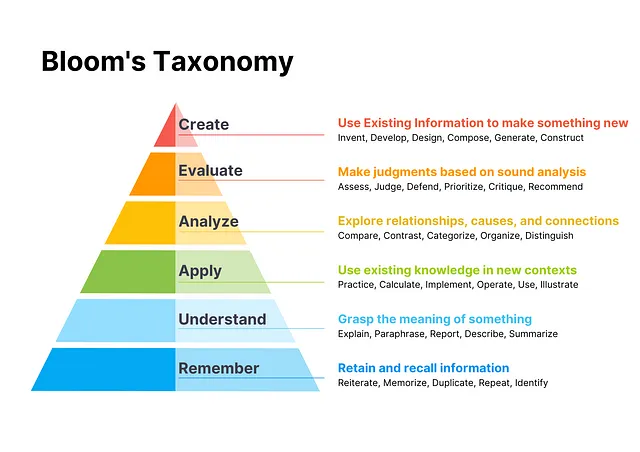Empowering Future Innovators

In today’s technology-driven world, full-stack development has emerged as a highly sought-after skill set. Full-stack developers possess a deep understanding of both front-end and back-end technologies, enabling them to create fully functional web applications.
As educators, it is crucial to equip aspiring developers with the knowledge, skills, and attributes required to excel in this field. By integrating graduate attributes, Outcome-Based Education (OBE), Bloom’s Taxonomy, and the associated verbs, we can create a comprehensive framework for training and teaching full-stack development.
As educators, it is crucial to equip aspiring developers with the knowledge, skills, and attributes required to excel in this field. By integrating graduate attributes, Outcome-Based Education (OBE), Bloom’s Taxonomy, and the associated verbs, we can create a comprehensive framework for training and teaching full-stack development.
This blog provides a detailed guide on how to nurture well-rounded full-stack developers using a holistic approach.

Identifying Graduate Attributes:
Technological Knowledge:
Ensure students grasp the fundamentals of front-end and back-end technologies, including HTML, CSS, JavaScript, server-side programming languages (e.g., Python, Ruby, or Node.js), databases, and frameworks like React, Angular, or Express.
Problem Solving and Innovation:
Foster students’ ability to analyze complex problems, think critically, and develop innovative solutions using full-stack technologies. Encourage them to approach challenges creatively and explore alternative approaches.
Collaboration and Communication:
Cultivate effective teamwork and communication skills, as full-stack development often involves collaborating with other developers, designers, and stakeholders. Emphasize the importance of effective communication, active listening, and constructive feedback.
Ethical Awareness:
Instill a sense of ethical responsibility and digital citizenship among students. Discuss the ethical implications of full-stack development, such as data privacy, security vulnerabilities, and inclusive design principles.
Lifelong Learning:
Encourage students to embrace continuous learning, adapt to emerging technologies, and stay updated in the rapidly evolving field of full-stack development. Foster a growth mindset and emphasize the value of self-directed learning.
Outcome-Based Education (OBE) and Bloom’s Taxonomy
Remember and Understand:
Introduce key concepts, terminologies, and frameworks relevant to full-stack development. Help students remember and understand the foundations of front-end and back-end technologies, such as HTML tags, CSS selectors, JavaScript functions, or database querying.
Apply and Analyze:
Evaluate and Create:
Teaching Strategies
To effectively train and teach full stack development, employ a range of instructional strategies that cater to different cognitive levels and engage students actively:
Lectures and Demonstrations:
Provide theoretical knowledge through lectures, explaining concepts, and demonstrating code examples. Use visual aids, interactive presentations, and live coding sessions to enhance understanding.
Hands-on Projects and Coding Exercises:
Assign projects and coding exercises that involve developing real-world full-stack applications. Encourage students to build projects from scratch, following industry best practices and applying their knowledge to solve practical problems.
Collaborative Learning and Peer Feedback:
Case Studies and Industry Examples:
Formative and Summative Assessments:
By employing suitable teaching strategies, we empower students to become proficient full-stack developers capable of creating impactful digital solutions in the technology landscape. To learn and read more about Based Education (OBE) and Bloom’s Taxonomy and Teaching strategies indetail please continue here!
